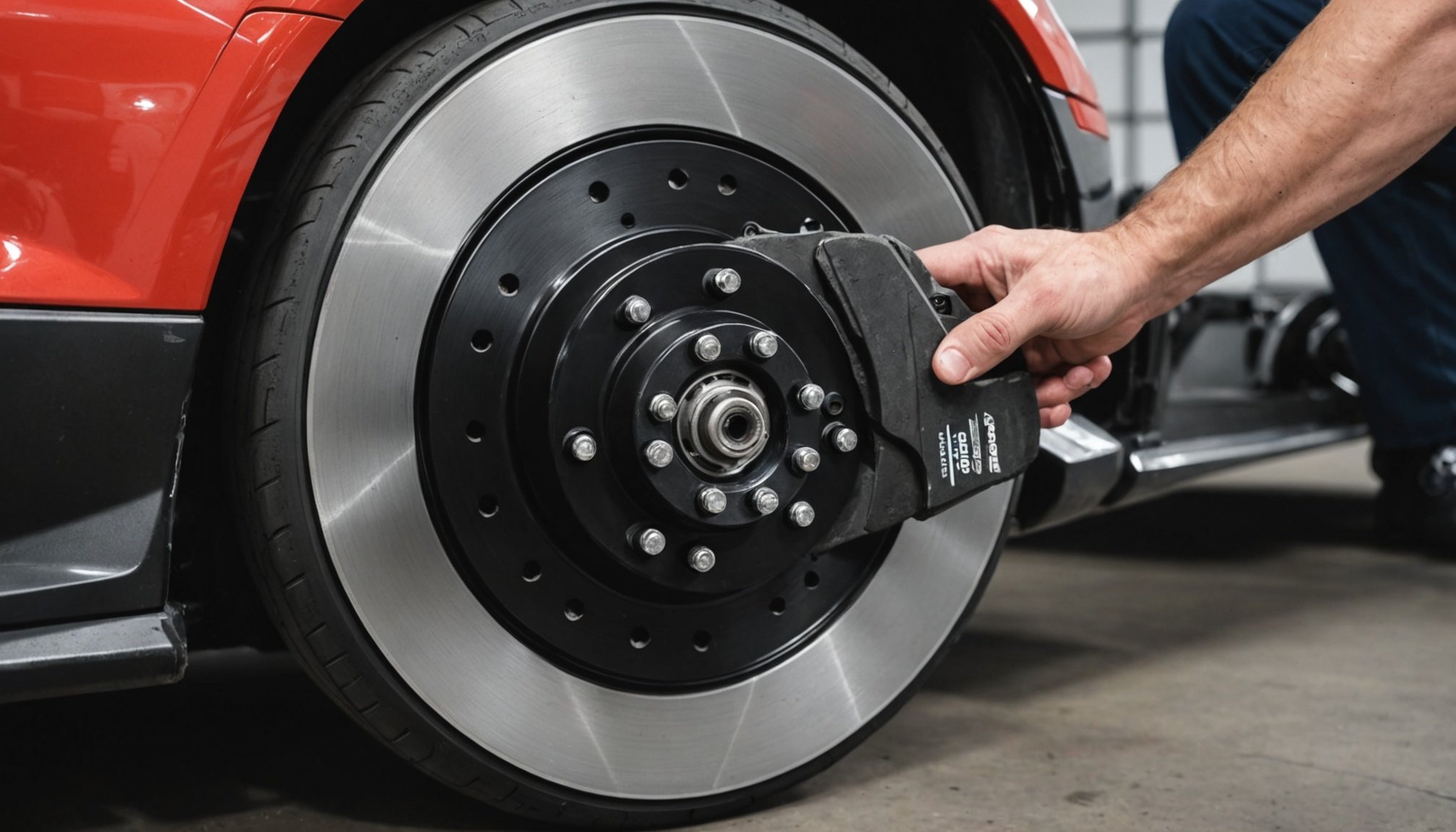How you brake significantly impacts the longevity and performance of your vehicle. When you upgrade to ceramic brake pads, it’s vital to adapt your braking technique for optimal results. This article looks at how to adjust your braking habits after installing ceramic brake pads to ensure that you get the best performance from your vehicle’s braking system.
The Basics of Braking
Before diving into the specifics of ceramic brake pads, let’s first understand the basic components of a vehicle’s braking system. The braking system is a complex mechanism that includes the brake pads, rotors, calipers, and other parts. When you step on the brake pedal, hydraulic pressure is applied to the brake calipers, which squeeze the brake pads against the rotor, creating friction that slows down or stops the vehicle.
This might interest you : What is the safest way to transport large glass items in a station wagon?
Brake Pads and Rotors
The brake pads play a significant role in this process as they are the components that come into direct contact with the rotors to create the necessary friction. Brake pads are made from different materials, each offering its own set of performance traits. The rotor, on the other hand, is a disc that is connected to the wheel. The friction from the brake pads slows down the rotor, thus slowing down or stopping the vehicle.
Understanding Ceramic Brake Pads
Ceramic brake pads represent an upgrade from traditional semi-metallic or organic pads. These pads are made primarily from ceramic material and copper fibers, offering superior performance in most driving conditions.
Also to discover : How often should the steering fluid be checked in high-mileage vehicles to prevent steering failure?
Performance and Wear
Ceramic brake pads are known for their exceptional performance. They offer quieter braking, less dust, and extended pad life, making them an attractive choice for many. In addition, ceramic pads generally have less wear on the brake rotors, leading to longer rotor life. However, these benefits don’t come without adjustments. Upgrading to ceramic brake pads will require you to modify your braking habits.
Adapting Your Braking Technique for Ceramic Brake Pads
Making the switch to ceramic brake pads means adjusting your braking habits to be in sync with the new pads’ properties.
Gradual Braking
The first change you should make is adopting a more gradual braking technique. Ceramic pads offer great stopping power, but they work best when they’re not subjected to sudden, hard stops. Instead of slamming on the brakes, try to apply them gradually. This method generates less heat and reduces wear on both the pads and rotors.
Brake Earlier
Ceramic brake pads experience less fade under high heat, meaning they’ll maintain their stopping performance even under heavy braking. However, they need a bit more time to warm up compared to other types of pads. To compensate for this, get in the habit of starting your braking a bit earlier than you would with other types of brake pads. This ensures that the ceramic pads are at optimal operation temperature when you need them most.
Precautions with Ceramic Brake Pads
While ceramic brake pads are a significant upgrade, they do require certain precautions to ensure their longevity and performance.
Avoid Track Use
While ceramic brake pads are excellent for everyday commuting or even spirited driving on winding roads, they are not suitable for track use. Track driving often involves heavy braking from high speeds, which can generate extreme heat. Ceramic brake pads don’t perform as well under these conditions, so stick with your traditional semi-metallic or organic pads if you plan on hitting the track.
Regular Inspection
Lastly, always inspect your brake pads and rotors regularly. Ceramic pads tend to wear out the rotors more slowly than other types of pads, but they can still cause rotor wear over time. Regular inspection allows you to catch any potential issues early on and address them before they lead to more significant problems.
In conclusion, while upgrading to ceramic brake pads can greatly enhance your vehicle’s braking performance, it does require some changes to your braking habits. By following these tips, you can ensure that you’re getting the most out of your ceramic brake pads while also preserving the longevity of your vehicle’s braking system.
Ensuring Proper Bedding-in of Ceramic Brake Pads
After the installation of your new ceramic brake pads, there’s an essential process you should not overlook – the bedding-in process. This process involves a series of hard stops from certain speeds to generate heat and evenly distribute the pad material onto the brake rotors. It is a crucial step in maximizing the braking performance of your ceramic pads.
The Bedding-in Process
The bedding-in process begins with several stops from moderate speeds, roughly 35-45 mph, followed by a few minutes of driving to allow the brakes to cool down. This cycle is repeated several times. The next step involves several hard stops from higher speeds, around 55-65 mph. Again, it’s followed by a cooling-off period.
This procedure accomplishes two things: First, it gradually brings the ceramic pads up to their optimal operating temperature, thus reducing the risk of thermal shock, which can cause the pad material to crack. Secondly, it allows a layer of pad material to be evenly transferred onto the brake rotors, which enhances the stopping power and reduces the chance of brake dust and uneven pad wear.
Post Bedding-in Care
After the bedding-in process, avoid aggressive braking for a few days to allow the new pad material on the rotors to fully cure. Failure to do so can result in poor braking performance and premature wear of your ceramic pads. Remember, your brakes are among the most vital components of your vehicle. So, proper maintenance and care should be your utmost priority.
Conclusion: Maximizing Your Ceramic Brake Pads’ Performance
Upgrading to ceramic brake pads can offer numerous benefits including quieter operation, less dust, and longer pad life. However, these advantages can only be fully realized when you adjust your braking habits accordingly. Remember to adopt gradual braking, start braking earlier than usual, avoid heavy track use, and ensure regular inspection of your brake parts.
Moreover, do not forget the essential step of properly bedding-in your new ceramic pads. This process, although often overlooked, is key to achieving optimal braking performance and extending the life of both your pads and rotors.
Lastly, remember that while the ceramic pads provide superior performance for most driving conditions, they may not be suitable for all situations such as track days. As a responsible driver, it’s essential to understand these nuances to get the best out of your brake system and ensure the safety of your journey.
Enjoy the enhanced performance and longevity that ceramic brake pads can bring to your vehicle, but remember to adjust and adapt accordingly. As the saying goes, with great power comes great responsibility. In this case, that power rests right under your foot, at the touch of your brake pedal.
Originally posted on 21/04/2024.











